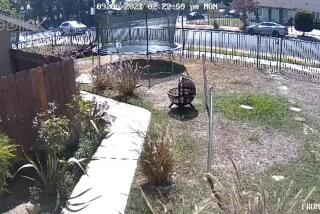ORANGE : Adjusters Take Crash Course
- Share via
The fender-bender between a Pontiac and a rusted Buick was probably the first accident where police tape went up before the crash.
The driver buckled his seat belt, donned a crash helmet and circled the Pontiac before hitting it at 5 m.p.h. to simulate one of those seemingly small accidents that can spawn whiplash suits.
The demonstration Monday was the opening act of a daylong course put on for lawyers, police officers and insurance adjusters by the National Institute of Forensic Studies.
“There is not much dispute when someone’s bones are broken and his brain is splattered on the windshield,” explained the institute’s executive director, Frederick J. Kakis. “The most interest is in the low-impact crash.”
After the early morning collision, about 150 observers went into classrooms in the Doubletree Hotel to discuss documentation techniques. The mantra of the course is that “everything means something,” from the characteristics of skid marks to minute pieces of hair and flesh embedded in the car’s windshield, Kakis explained.
Without a well-documented crash scene, a technical expert has little hope of accurately assessing blame, the course handbook states. But various methods can help determine the “what, where, when, why and who” of a crash.
More to Read
Sign up for Essential California
The most important California stories and recommendations in your inbox every morning.
You may occasionally receive promotional content from the Los Angeles Times.













